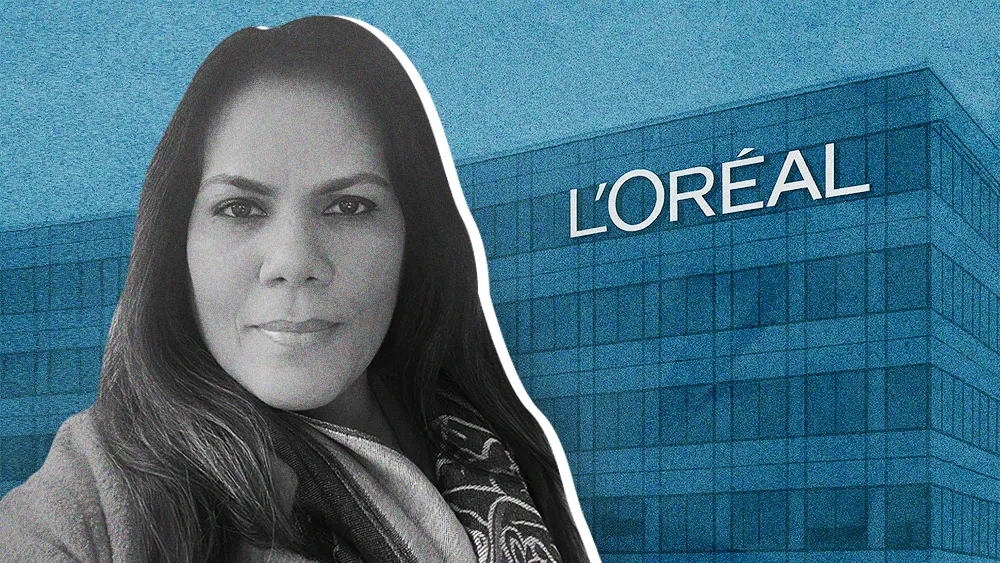
Key Points
A new AI paradox has emerged where technology's speed clashes with corporate inertia, creating an "ambition gap" between business and IT teams.
Sangita Tripathi, AVP and Head of Integration for the Americas at L'Oréal, argued that the only solution is to "blur the lines" and operate as one team.
Sangita called for leaders to abandon traditional playbooks and embrace democratized accountability, turning every employee into an agent of change.
As AI implementation in the enterprise accelerates to a sprint, the promise of speed is clashing with the realities of corporate inertia. The real competitive threat across industries isn’t lagging behind on models; it's the drag of legacy operational debt in the departments tasked with harnessing them. While a recently-released report out of MIT suggested most enterprise AI projects fail to take hold, it's important to note that not all implementation is created equal. Success lies within cultural shifts led by companies that legacy systems often must be re-built foundationally from both a cultural and technical perspective to thrive in an increasingly AI-native world.
We spoke with Sangita Tripathi, the AVP and Head of Integration for the Americas at L'Oréal. Drawing on over two decades of experience leading complex technology transformations at global enterprises like Healthfirst, Hess, and ADP, Sangita built her career on the principle that organizations are stronger when they are integrated. She argued that the only way to bridge the gap between AI's potential and today's operational reality is to fundamentally dismantle the organizational silos that have defined corporate structure for decades.
Blurring the ambition gap: Sangita said the only solution to address the widening ambition gap between business leaders and IT is to erase the old lines that have kept things siloed for so long. "I think it's time that we blur the lines between business and IT. The distinction we have had in the past revolved around rigid lines. But now when executive stakeholders on the business side see opportunity, it's important that they have a partner from IT alongside them."
Potential versus reality: Core to AI adoption and the acceleration paradox is the fundamental disconnect in perception. As Sangita described, "While one side sees limitless potential, the other is grounded in the complex realities of execution. This creates a natural and dangerous friction. The business side thinks, 'I want this capability, and with AI's speed, I should be able to get it done overnight.' But when it comes to technology teams, they are very clear on their thought process, and rightfully so: there is governance needed, there is data privacy needed, security needed. This is where I see the maximum struggle."
Sangita's solution is not theoretical, but a proven model she lives every day. Further, this philosophy and concept of "One Team" has become so central that the company has effectively rebranded around it, embedding collaboration as the foundation for responsible acceleration. Now IT and Business are able to co-create from the start, illuminating new roadblocks and opportunities that help ground the projects against more realistic timelines and expected business outcomes.
The beauty tech model: "We are a Beauty Tech company at heart, and the reason we feel comfortable using the 'Tech' terminology is because we see the commerce and IT sides as one team powered by technology across every facet of the business," she stated. "And that needs to be the reality for all enterprises, where they blur lines and take initiatives forward together."

The shift toward an integrated model fundamentally changes the nature of corporate transformation. Instead of a top-down mandate, change becomes a distributed and organic function, a reality echoed in recent industry analysis of change management strategies. Competitive advantage is built on the agility of an organization's people, process, and technology. This requires a new kind of accountability and leadership, where decision-making, risk, and opportunity are shared across the entire organization.
Democratized accountability: "It becomes the responsibility of everyone to start asking those questions: 'Why can't I get this done differently? Where is the blocker?' When each one of us owns that accountability and responsibility, we'll start to see that needle move." Sangita's point underscored a deeper reality for leadership: when it comes to AI, transformation can't be delegated to a single team or handful of digital leaders in an organization. AI adoption and implementation requires a cultural reset where every employee becomes an active participant in questioning processes, identifying friction, and driving change. This democratization of accountability shifts AI from a top-down initiative into a shared enterprise movement where business and technology leaders co-own both the ambition and the execution.
But before any cultural or strategic shift can take hold, Sangita issued a critical warning, "The most sophisticated AI strategy in the world is useless if it’s built on a weak foundation." Her philosophy is aligned with other leadership, which emphasizes the need for data quality, governance, security, and privacy considerations as the foundational layer to AI. If these areas are left as afterthoughts, you will be left with a pilot destined to fail versus becoming an accelerator and leverage point for your business.
The data prerequisite: Sangita's involvement in continuing education cuts right into the most common barrier to AI adoption and success: data readiness. "The multiple sessions I have attended at conferences and events are all about the state of your data, and for good reason. As an enterprise, I can have all the tooling and workflows, but can it sit on our data? Can I make the best use of my capabilities? That's where it matters: the data. And structuring the data at the enterprise level is on us." Her point reframed AI not as a technology-first challenge, but as a data-first problem that focuses on the less glamorous part of the equation. Without investing in proper data structure and organization, you're effectively limiting your chances of success by simply reinforcing noise and inefficiency as opposed to enhancing your enterprise AI systems to deliver insights that are accurate, actionable, and trusted. In Sangita's view, data stewardship is not a "nice-to-have," it’s a prerequisite for setting the foundation for success across agentic and GenAI projects.
Sangita's final charge to leaders and executives grappling with these challenges was to abandon the comfort of established playbooks. In the AI era, incrementalism isn't just slow, it can be a major liability. "If you have a transformation coming up on your roadmap, it's important that you look at the AI capabilities and position yourself to take advantage of it, rather than going the traditional way. Leaders usually go the traditional way because it's already in play, they know how it's going to go, and the structure is known."
.svg)

.webp)



